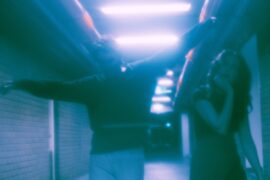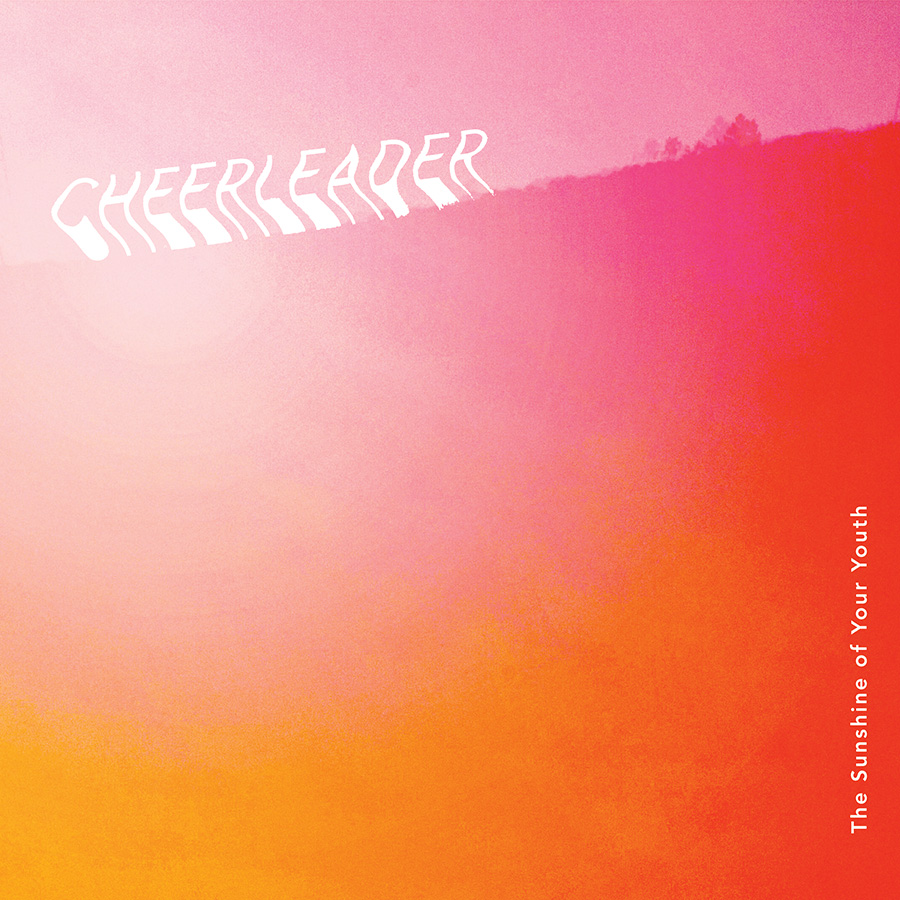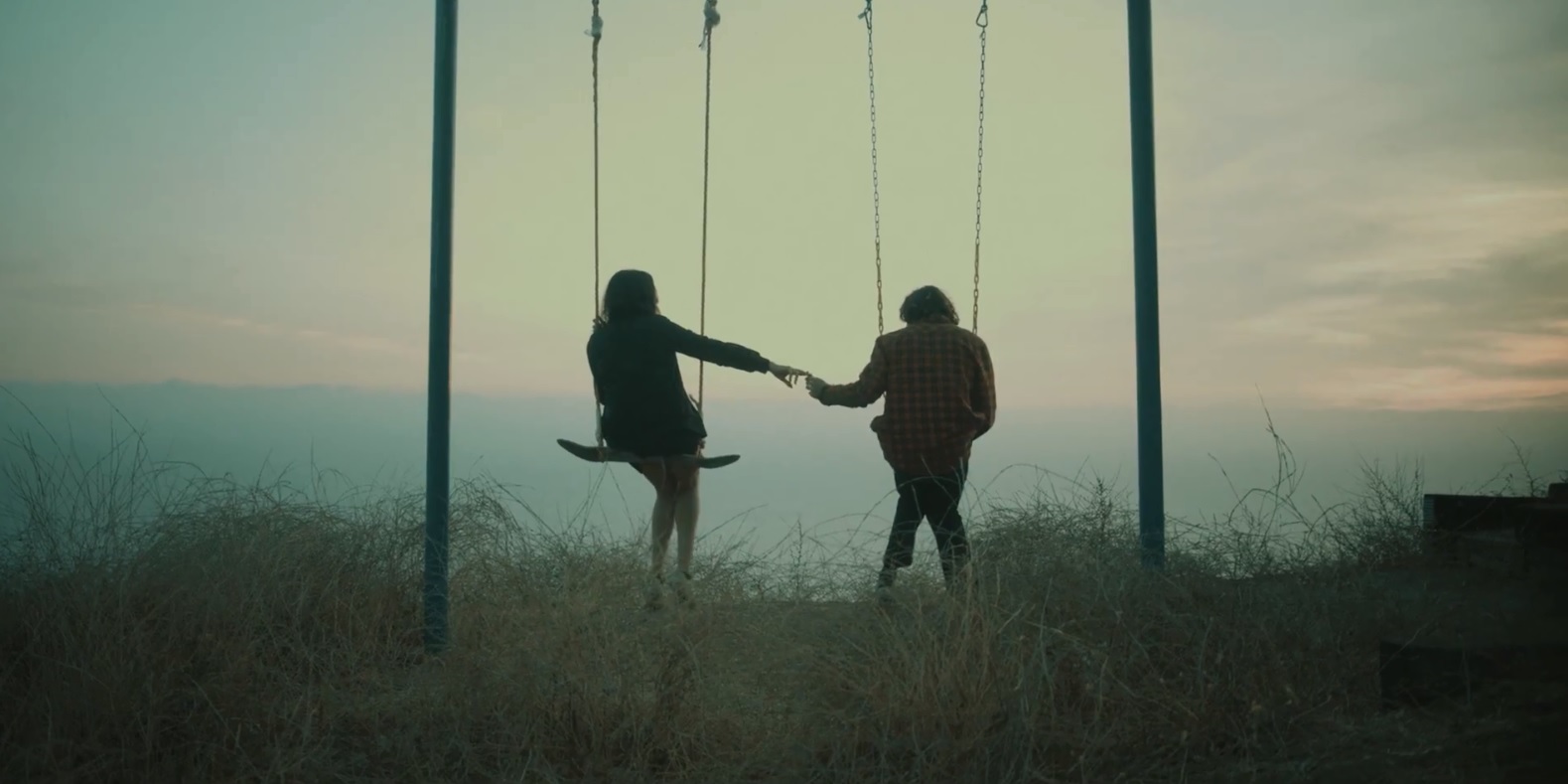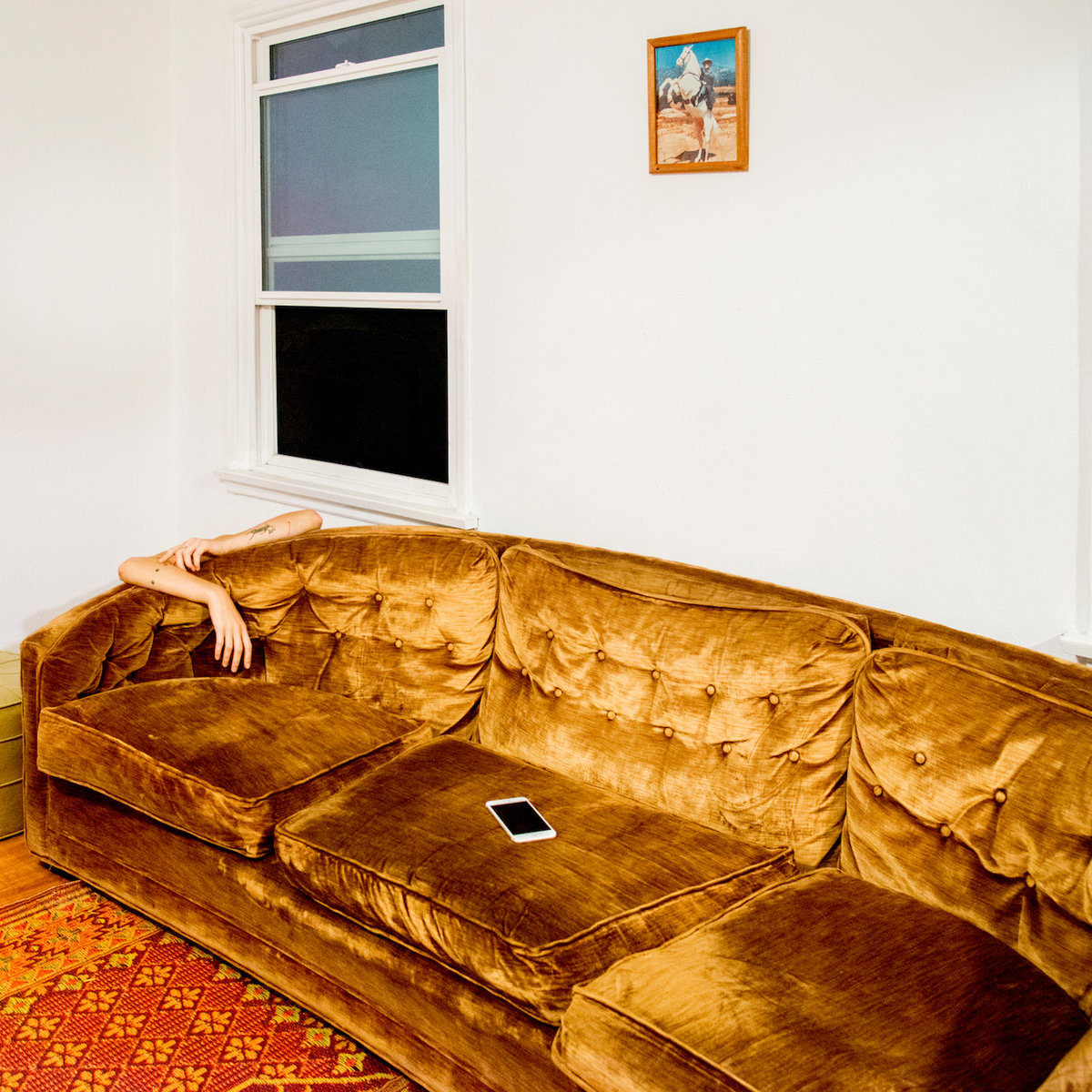Jordan Lehning’s cinematic fourth album ‘Three Colored Wall’ is an experimental and existential triumph dwelling in the depths of the known and unknown.
Stream: “Drunk Dreaming” – Jordan Lehning
Reminding yourself that music (or art, for that matter) isn’t limited to the current trending form gives the idea permission to lead you, rather than you leading it
A nuanced musical exploration of mortality and death ten long years in the making, Jordan Lehning’s fourth album is an experimental and existential triumph. Dwelling in the depths of the known and unknown, the ambitious Three Colored Wall is emotionally charged and and sonically expansive – a universe unto itself that engulfs the senses.

Holy cow man alive
It comes as no surprise
To find you on my mind
If on the border line of
waking dream alike
a fool for sleep company
Roll roll out of bed
I must’ve lost my head and
Don’t drunk dream and drive
for all the colored lights are
Blinking green and red
what was it that you said to me?
– “Drunk Dreaming,” Jordan Lehning
Released August 6, 2021 via Tone Tree Music, Jordan Lehning’s Three Colored Wall is absolutely dazzling. A Nashville-based singer/songwriter and producer/arranger, Lehning captured our ears and our imaginations with last year’s cinematic third album Little Idols, which Atwood Magazine described as “an intimate and expansive brush of alt-folk grace” and a “musical journey you can completely immerse yourself in.” A concept record written in the style of a short film and approached from a director’s perspective, Little Idols tells the non-autobiographical tale of an affair between a married woman and a single man, capturing listeners’ fancy through stirring sonics and colorful lyricism.
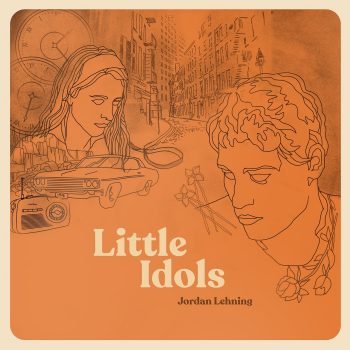
Another cinematic encapsulation of sound and story with a compelling title [i], Three Colored Wall arrives exactly one year after Little Idols‘ release, and finds Lehning completing a project he first began recording ten years ago; he describes it as a “piece of unfinished business I always knew I’d come back to.” Whereas Little Idols took liberties with fiction and storytelling, Three Colored Wall hits close to home as Lehning explores, confronts, accepts, and dwells in the depths of death from three time frames – past, present, and future.
“I’ve always been kind of obsessed with death,” Lehning tells Atwood Magazine, “to the point where I can imagine myself at some ripe old age looking back and wondering why I spent so much of my time thinking about it. And in some ways, that’s what this record is. It’s me drumming up this ghost and the ghost telling me that it has nothing to offer, that I need to get back to living my own life.”
“I started this record in 2011 on a 488 MKII 8 Track Tape Cassette recorder,” he explains. “Each morning I’d wake up and record in sort of a stream of consciousness fashion. The lyrical content consistently pointed towards how we handle trauma and grief but in the style of cautionary fairytales. For me these things had to do with events that took place in my life in 2000 and 2001. After a couple weeks I had about 12 songs and dumped it over to Pro Tools and began adding to the 8 track info. Life got busy that same year and the record sat for a while. I would periodically come back to it, and then in 2020 with lockdown there was suddenly an amount of time I could devote to completing what became a significant undertaking. At its inception, there wasn’t a vision, but rather a process and limitation. Tracking first thing in the morning on an 8 Track Tascam. Allowing the thing to emerge however it wants. It wasn’t until it was written that I understood what it was.”

Lehning’s fourth record examines the artist’s own experiences with grief and loss, “but told from the perspective of many different characters.”
It’s as tranquilizing as it is unsettling – a moody, dramatic, and immersive work ready to whisk its listeners into a world of our dreams, where we can either relax and drift along to the music, or examine our own mortality. Dynamic, driving, sonics, buoyant melodies, and Lehning’s own charismatic singing make for a kaleidoscopic journey. He likens the record to a book of short stories, and hopes those who press “play” listen in full from start to finish.
“Little Idols and Three Colored Wall are vastly different, with maybe only one similarity; that they exist as one whole piece,” Lehning says. “They should play and feel like a short movie. Idols was much more organic and at times much more minimal, while TCW was extremely synthetic. Idols is a romance, while TCW is a fantasy. I have what I consider a very healthy relationship with the art that I make. If I have an idea, I let it be whatever it wants to be, and I can’t spend time worrying about the expectation of the audience. In a way, the idea’s intent is none of my business. I’m just delivering the message, hopefully without too much blemish. Reminding yourself that music (or art, for that matter) isn’t limited to the current trending form gives the idea permission to lead you, rather than you leading it.”
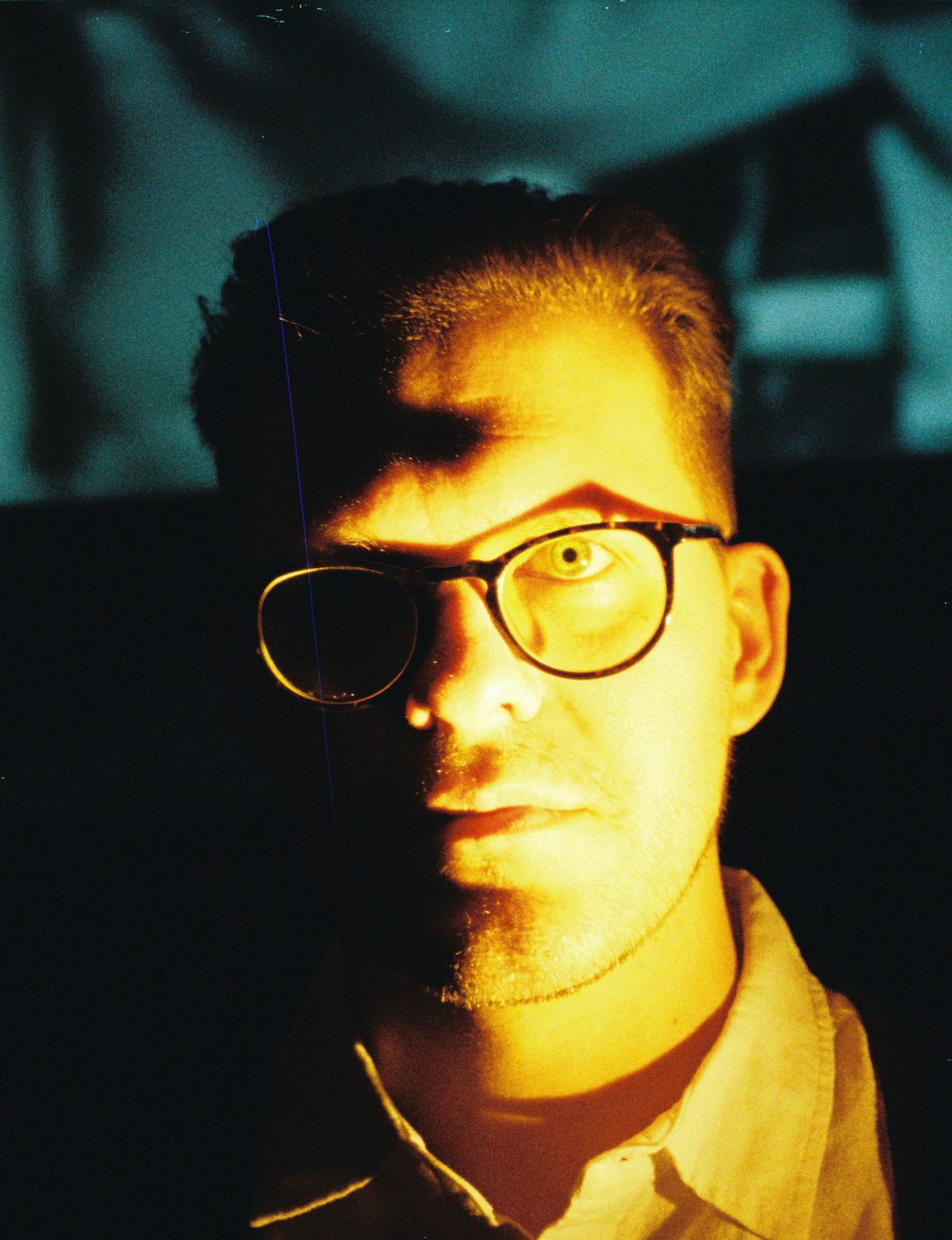
Three Colored Wall is unapologetically eclectic, its seamless blend of analog and electronic sounds keeping listeners on our toes throughout. The album’s opener, “Static” serves as both a sonic and thematic gateway for all that’s to come. A gorgeous, almost whimsical landscape dazzles the ears as the song begins: It’s only once Lehning starts singing that the track’s more sobering subject matter comes into frame. The artist’s voice is part plaintive, part methodical as he weaves his audience through a range of scenarios: “Ever lost your way around the block? Ever found yourself at a loss? There’s a jet stream cutting up the sky, crossing x’s and marking spots…“
I wonder have you wondered baby
About the living and dead end lines
Nobody’s gonna hurt you now love
But the static will steal your mind
Yea the static will steal your mind
When you leave this old world behind
And the ringing in your ears
Is the sound of passing time
Death – or “the static” – is experienced here as a vessel of relief; of catharsis; of an ultimate sort of release from the tensions constantly building in our lives, and in our minds. For most, this is not a pleasant concept to think about, but Lehning isn’t going for ease; his art provokes us to experience discomfort, pushing us deep into this chasm where life and death coexist as concepts and not disparate finalities.
Lehning’s personal reckoning continues through the cool, crisp, jarring hits of “No Memories Barred” and the soothing, gentle tranquility of “Just a Place.” He picks up a bit of country influence, layering whistles and whining pedal steel guitars over the driving, ethereal “Drunk Dreaming,” and he hones in on bustling, bright melodies and tight pop songwriting on “1234evermore,” which explores (in his words) the “innate dichotomy of love.”
Listen to the wind up high
Listen to the fiery skies
Hear it trembling something wonderful
Hear it growing like a vegetable
Hey, no wonder they find
High above them chimneyed skies
Something singing wonderful
But saying something terrible
One two one two
Do you love me too?
Three four three four
Forever more
One two one two
Do you love me too?
Three four three four
Forever more
While Three Colored Wall deserves some 28 minutes of our undivided attention, it is not without its highs and lows. Lehning doesn’t mind writing outside of the pop world. Thus while singles like “1234evermore,” “No Memories Barred,” and “Static” offer listeners definitive patterns, melodic repetitions, and memorable choruses, other moments on the album’s back half (“A Walking Picture,” “A Very Old Fable,” “Driving Slowly to the County Fair,” and “A Linear Business”) ask for a little more patience and require more active listening on the part of the audience – that is, if you want follow Lehning’s existential story line. Otherwise, the music is, in and of itself, a polychromatic indulgence.
Driving so slowly you
Can’t feel the car moving
Still its so that you know
You’ll get there
Before you know
And the lights
In the smoke
They’ll start shining
Can you see them
Can you hear them
Old ghost?
– “Driving Slowly to the County Fair,” Jordan Lehning
Lehning says his personal highlights moments come toward the album’s close. “My favorite on the record is ‘Driving Slowly to the County Fair,'” he notes. “There’s only one verse that doesn’t come in until half way through. There’s a melody line and bass line that dance together, but really a definitive chord progression. The soundscape feels very much like the scene.” He also cites the lyrics to closer “Linear Business,” a provocative and dreamy finale, as some of his favorites:
Well it took me three hours to walk home I’d seen the sun set to its end
I sat down and tried to be still for a moment But the earth just stayed in spin
I thought about the people out passing time But it was time that was passing them
And all the stars shine on with heavy hearts Hurried down towards the horizon
Then I remembered the dream I had had that night
I was with a very old friend
And a feeling that was lying in wait all day
Finally came out of hiding
And it occurred to me then that some things start
And somethings never being
And a dream has no beginning or end
You find yourself suddenly within
It’s a linear business we’re running here
Though we treat it like a cyclical ride
everything built upon repetition
With no two moments alike
It’s a cyclical business we’re running here
Though we treat it like a linear ride
everything built upon repetition
With no two moments alike
“We’ve reached the county fair,” he says of his album’s end. “All the people from our story are on the carousel, us included. I recall a dream where my ghost had visited me, then think on dreams as having no beginning or end. As we spin on the carousel, we consider how life is linear, though we treat it cyclically.” The outro is abrupt – “cut off as any good cycle would be, and happens to be the sound of the 8 track running out of tape. The reels within the cassette resemble the carousels and I thought this was funny, fitting, and a little frightening.”
Lehning recognizes the vastness of his latest album, which is best listened to with an open mind and a kindred sense of wonder at the world. “I have a strong visual relationship to each song, and I would love at some point to accompany it with more videos or artwork,” Lehning shares. “I hope the music incites imagery for the listener as well. Beyond that, the record as a whole is an experience and it’s meant to be listened to in a sitting.”
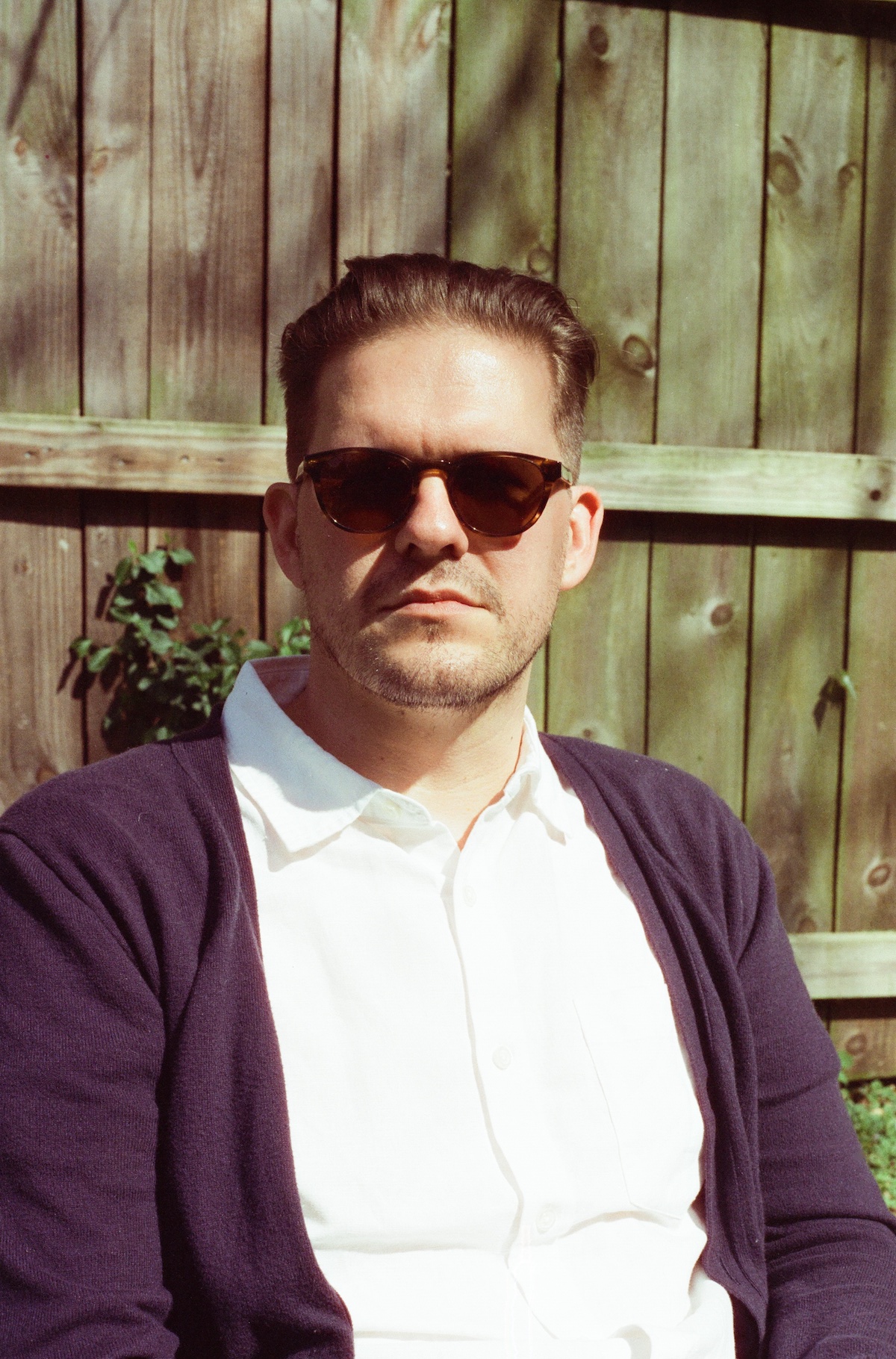
“The process of picking the album back up and completing it was extremely painful. I’ve mentioned before it was like a form of self reanimation. I’m very pleased with how it turned out and the process of my next record will be totally different. All organic instruments. No sequencing. No effects. The transitions will be composed instead of edited. All the work will be on paper instead of the computer. Although effective, turning an edit into a performance is at its core trickery. Moving forward, I’ll attempt to limit the tricks to convey an idea.”
Experience the full record via our below stream, and peek inside Jordan Lehning’s Three Colored Wall with Atwood Magazine as the artist goes track-by-track through the music and lyrics of his fourth LP!
[i] Why the title “Three Colored Wall”? “The long story,” says Lehning: “In or around 2015 my oldest son had drawn a picture at school of three large blocks all with different colors. He titled it Three Colored Wall. The title was printed on a note card and shown in his class art exhibit. In 2020 while I was finishing Little Idols, I was reading Ingmar Bergman’s The Magic Lantern, which reminded me a lot of Joyce’s Portrait of The Artist as A Young Man; a book I’d read some years prior and was now ready to revisit. I had already planned to take this newfound stretch of time to complete the 10-year-old record, but had not yet come up with a title. The moment I finished Magic Lantern, I decided to reopen Portrait, which at the time sat on a shelf in my studio. I pulled it out and found a notecard used as a book mark, and on it was printed “Three Colored Wall.” The title jumped out at me and I felt this to be an auspicious encounter. What it came to mean in the context of the album is three time periods juxtaposed or projected on one wall. Past (2001), Present (2011), and Future (2021).”
— —
:: stream/purchase Three Colored Wall here ::
Stream: ‘Three Colored Wall’ – Jordan Lehning
:: Inside Three Colored Wall ::

— —
Static
This was the first song I wrote and recorded. Serving as an introduction to the sonic landscape of the record, “Static” is a promise of the stasis that awaits. A jet stream leaves an “x” in the sky marking our destination in the heavens.
No Memories Barred
A female gasp is the awakening of our corpse. An alchemist is investigating the reemergence of an old ghost. He asks, “Why have I, why have you, why have we returned?” and later comes to the conclusion that she has not returned, and that she has “always been here.”
Just A Place
A farmer attempting to bring back to life an old lover in the dirt is met by the spirit of a dodo who warns him that he’s entering a dangerous place where he could become trapped. Bringing up the dead. Reliving the past is in effect a lie. The dodo explains “it’s just a place that lingers through the lies of you and me.”
Drunk Dreaming
We meet a frontiersman who searches for a lost love. As he rides, he whistles a call to the mountains, which is answered by the same call from a mysterious host. Eventually, he meets this apparition who does not welcome him, but instead asks “Why you wandering round these parts? There must be something you forgot to tell me. If so, tell me now.” He leaves, ignoring defeat and continues his call that is still met by an answer.
Fog In The Looking Glass
This is me in future tense, lost in a fog, using a looking-glass to get closer to the past.
1234evermore
A large Venus fly trap plays the role of lusts vice grip. The crooner sings of the dichotomy of love. “Oh to be in love is terrible. Oh to be in love is wonderful. It’s a weakness that we all must face. It’s a choice that nobody can make.”
A Walking Picture
A tourist near a lake sees something shining. On closer examination he sees a two-dimensional spirit floating, an escaped memory from a photo who wants only to return.
A Very Old Fable
A Priest of Ethics stands and tells a story of two young teenagers smoking out on a balcony. They speak while exhaling smoke. The smoke curls up with the wind and their message takes shape. The teacher then goes on to tell the story of Hansel and Gretel, seeming to have forgotten how the story ends. History is blurred and the past is fictionalized.
Driving Slowly To The County Fair
On the way to the county fair, we are stuck in traffic. We can barely feel the car move. How slowly time moves though our end is inevitable. The lights from the county fair become visible and I ask, “Can you see them? Can you hear them, old ghost?”
A Linear Business
We’ve reached the county fair. All the people from our story are on the carousel, us included. I recall a dream where my ghost had visited me, then think on dreams as having no beginning or end. As we spin on the carousel, we consider how life is linear though we treat it cyclically. “It’s a linear business we’re running here, though we treat it like a cyclical ride. Everything built upon repetition, with no two moments alike.” And then the following line proves this by a slight alteration “It’s a cyclical business we’re running here, though we treat it like a linear ride. Everything built upon repetition with no two moments alike.” This takes us to the outro, which is abruptly cut off as any good cycle would be, and happens to be the sound of the 8 track running out of tape. The reels within the cassette resemble the carousels and I thought this was funny, fitting, and a little frightening.
— —
:: stream/purchase Three Colored Wall here ::
— —
Stream: “Static” – Jordan Lehning
— — — —

Connect to Jordan Lehning on
Facebook, Twitter, Instagram
Discover new music on Atwood Magazine
? © Zac Farro
:: Stream Jordan Lehning ::




